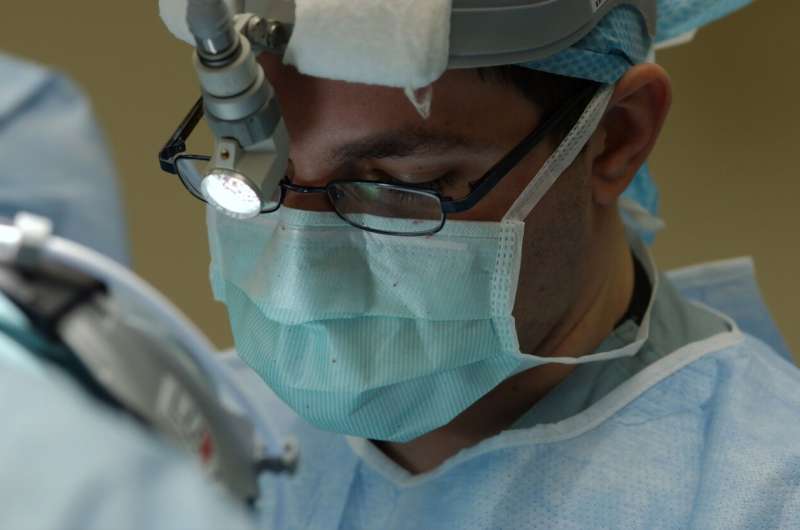Cryobiopsy of the lung promises a high degree of safety for patients

For the first time, the high safety and low mortality of a still novel, simpler procedure for lung biopsies has also been shown in a European context. The so-called transbronchial cryobiopsy was performed in 75 patients in an Austrian clinic as part of diagnostic procedures. The occurrence of side effects and mortalities were then monitored and recorded over a period of 90 days. In addition to the high safety of cryobiopsy, a lower mortality of this method was also shown in comparison to surgical lung biopsy. The results have now been published in the journal Therapeutic Advances in Respiratory Disease.
The lung tissue is well protected in the chest cavity—which unfortunately also makes diagnostic methods more difficult. If tissue samples are needed, surgical lung biopsy is a proven procedure. However, the chest cavity must be accessed from the outside, which is time-consuming, bears a certain risk and is expensive, too. A recently developed procedure—transbronchial cryobiopsy—is simpler and cheaper. Here, a probe is inserted through the trachea and bronchi, and a piece of lung tissue is frozen to the probe and then removed. Up to now, there has been only scant data on the safety of this procedure. Now a team from the Karl Landsteiner University of Health Sciences Krems (KL Krems) has collected prospective data on safety and mortality—and found promising results.
High safety, reduced mortality
"In fact, only a few well-treatable side effects occurred after transbronchial cryobiopsy. At the same time, mortality was lower than with alternative diagnostic procedures," says Klaus Hackner, senior physician at the University Hospital Krems of KL Krems and first author of the study—one of the few hospitals in Austria where this method is already routinely used. The observed side effects included above all an air leakage into the area between the lung and the chest wall, known as pneumothorax. This occurred in 20% of those treated. Bleeding of the bronchial tubes occurred in about 1/3 of the cases, but only one case required more intensive medical treatment.
Regarding the side effects, Hackner says: "We also found that various lung parameters—such as a reduced total lung capacity—can give indications of the risk of later side effects even before the biopsy. This means that follow-up care can be organized accordingly in advance and the risks of the method can be reduced."
No fatalities
The study provided impressive data regarding the mortality of the diagnostic procedure. Not a single death was recorded among the patients in the first 30 days after the cryobiopsy. This is in contrast to the mortality of the surgical biopsy, which was reported in other studies—with all the difficulty of exact comparability—with up to 4.5% after 30 days. Even after 90 days, the mortality of the cryobiopsy was lower than that of the surgical procedure, at 1.3%. Senior physician Klaus Hackner says: "It must be said that this single death was not causally related to cryobiopsy, but was appropriately included in the study."
More information: Klaus Hackner et al, Transbronchial lung cryobiopsy: prospective safety evaluation and 90-day mortality after a standardized examination protocol, Therapeutic Advances in Respiratory Disease (2022). DOI: 10.1177/17534666221077562



















